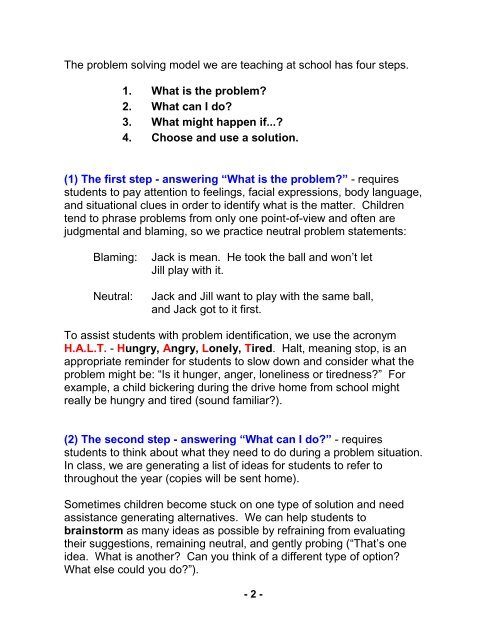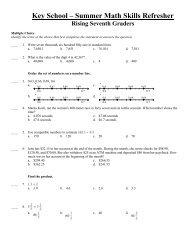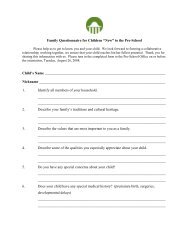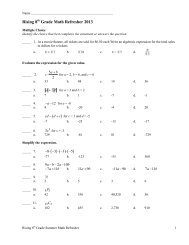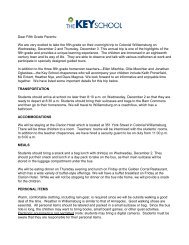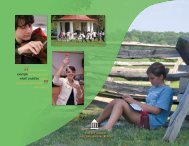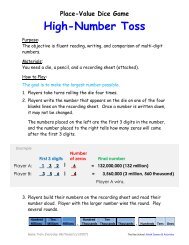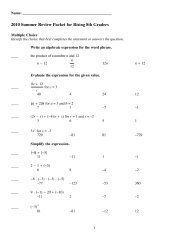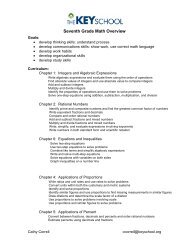Third Grade Life Skills Parent Newsletter - Key School
Third Grade Life Skills Parent Newsletter - Key School
Third Grade Life Skills Parent Newsletter - Key School
Create successful ePaper yourself
Turn your PDF publications into a flip-book with our unique Google optimized e-Paper software.
The problem solving model we are teaching at school has four steps.<br />
1. What is the problem?<br />
2. What can I do?<br />
3. What might happen if...?<br />
4. Choose and use a solution.<br />
(1) The first step - answering “What is the problem?” - requires<br />
students to pay attention to feelings, facial expressions, body language,<br />
and situational clues in order to identify what is the matter. Children<br />
tend to phrase problems from only one point-of-view and often are<br />
judgmental and blaming, so we practice neutral problem statements:<br />
Blaming:<br />
Neutral:<br />
Jack is mean. He took the ball and won’t let<br />
Jill play with it.<br />
Jack and Jill want to play with the same ball,<br />
and Jack got to it first.<br />
To assist students with problem identification, we use the acronym<br />
H.A.L.T. - Hungry, Angry, Lonely, Tired. Halt, meaning stop, is an<br />
appropriate reminder for students to slow down and consider what the<br />
problem might be: “Is it hunger, anger, loneliness or tiredness?” For<br />
example, a child bickering during the drive home from school might<br />
really be hungry and tired (sound familiar?).<br />
(2) The second step - answering “What can I do?” - requires<br />
students to think about what they need to do during a problem situation.<br />
In class, we are generating a list of ideas for students to refer to<br />
throughout the year (copies will be sent home).<br />
Sometimes children become stuck on one type of solution and need<br />
assistance generating alternatives. We can help students to<br />
brainstorm as many ideas as possible by refraining from evaluating<br />
their suggestions, remaining neutral, and gently probing (“That’s one<br />
idea. What is another? Can you think of a different type of option?<br />
What else could you do?”).<br />
- 2 -


